Shrimp Stock – This easy-to-make stock adds incredible flavor to soups, stews, and more. One taste, and you’ll never throw away your shrimp shells again! 😋
It might sound intimidating, but let me ease your fears. Nothing is simpler than making a quick shrimp stock, which will pay insanely rich flavor dividends in any dish you add it to.
There are tons of reasons to love this simple shrimp stock recipe, but one of the best is that it is a total waste reducer. You can turn what you might have considered trash into something delicious! That’s cooking you can feel good about!
What to Make With Shrimp Stock
Besides being utterly tasty, homemade shrimp stock is super versatile. It’s a great base for soups, stews, sauces, gumbos, jambalayas, risottos, or any recipe that calls for seafood or fish stock. It adds depth and richness and enhances the overall seafood flavor. 👩🏿🍳🤌🏿
Recipe Ingredients
- Shrimp Shells and Heads – You’ll need the shells and heads from about a pound of shrimp.
- Mirepoix – Onions, celery, and carrots are a classic French seasoning blend to ramp up flavor.
- Seasonings – Garlic, bay leaf, peppercorns, and salt add subtle herby notes.
- Oil – Sauting everything before you boil delivers some beautiful depth of flavor.
How to Make Shrimp Stock
Saute the Ingredients
- Prep Ingredients – Thoroughly rinse shrimp shells and heads under cold water to remove impurities or sand particles. Pat them dry with a paper towel.
- Prep Base – Heat the vegetable oil in a large stockpot or Dutch oven over medium heat. Add the shrimp shells and heads to the pot and sauté them for 5-7 minutes. They’ll turn pink and release their aroma, but stir occasionally to prevent burning.
- Veggies – Add the chopped onion, carrots, celery, garlic, bay leaves, whole black peppercorns, and salt to the pot. Sauté for an additional 3-4 minutes to allow the vegetables to soften slightly and for the flavors to develop.
Simmer the Stock
- Water – Add enough water to cover all the ingredients, and bring the mixture to a boil over high heat.
- Simmer – Once it boils, lower the heat to a gentle simmer. Simmer for 30-45 minutes so the shrimp shells and vegetables infuse their flavor into the stock.
- Skim – As the stock simmers, skim the impurities that rise to the surface with a spoon or fine-mesh sieve. The results are a clearer, cleaner stock.
- Strain – After it finishes simmering, remove the stock from the heat and let it cool for a few minutes. Strain it through a fine-mesh sieve or cheesecloth into a large bowl or another pot, and discard the solids.
- Cool – Allow the shrimp stock to cool completely before transferring it to storage containers. You can divide it into portions that suit your needs.
- Use – Add your fresh shrimp stock to soups, stews, sauces, risotto, and more. Or freeze for later.
Recipe Variations
- Feel free to add more aromatics, such as leeks, parsley stems, fennel fronds, or thyme, to enhance the flavor profile of the shrimp stock.
- Add heat. Sliced jalapeno and red pepper flakes added to the boiling stock make an excellent base for spicy Creole recipes like gumbo.
- Seafood medley stock. Combine shrimp shells with shells and trimmings from other seafood like crab, lobster, or fish for a multi-seafood flavored stock.
Tips and Tricks
- Roast the shells and heads in the oven at 400°F (200°C) for 10-15 minutes before simmering to intensify the flavor. This optional step adds a deeper, nutty flavor. 🤤
- Clarified stock. Whisk an egg white with ¼ cup of water and stir it into the strained stock. Bring it to a boil, turn off the heat, and let it sit for about 5 minutes. The egg whites will take a lot of impurities with them, so strain again, and you have clarified stock.
- No waste cooking. Instead of discarding the shrimp shells and heads afterward, dry them in the oven and grind them into a fine powder. Then, use the powder as a seasoning in various dishes.
Make-Ahead Instructions
Homemade shrimp stock lasts in the refrigerator for up to four days or four months in the freezer. You can freeze it in airtight containers or ice cube trays for easy measuring. Thaw frozen stock in the refrigerator overnight or pop it in straight from the freezer.
Serving and Storage Instructions
Use shrimp stock immediately in any recipe that calls for a seafood stock, or let it cool and store it. As noted, store it in airtight containers, either in the fridge or in the freezer.
FAQs
Simply up the amount of shells to compensate for the lack of heads. Roasting the shells in the oven will intensify the flavor. Between that and the sauteing, you should get an equally tasty shrimp stock, no problem.
Yes, you can use frozen shrimp shells to make stock. Just make sure they’re clean and don’t have freezer burn. If I clean shrimp for a recipe and don’t use the shells immediately, I freeze them in an airtight container until I’m ready to make stock. It works like a charm.
Sure. You can reduce or even omit the salt in this recipe. Do what you need to for your taste or dietary preferences.
How to Use Shrimp Stock
Shrimp stock is a must-have in shrimp gumbo, jambalaya, and bisque. Another great use is shrimp risotto as a stand-alone or delicious side for grilled rockfish or grilled scallops. 🤩
More Sensational Shrimp Recipes to Try
Conclusion
This easy and delectable shrimp stock elevates your favorite seafood dishes. Have you already made it? Let me know how it turned out in the comment section below. 🙌
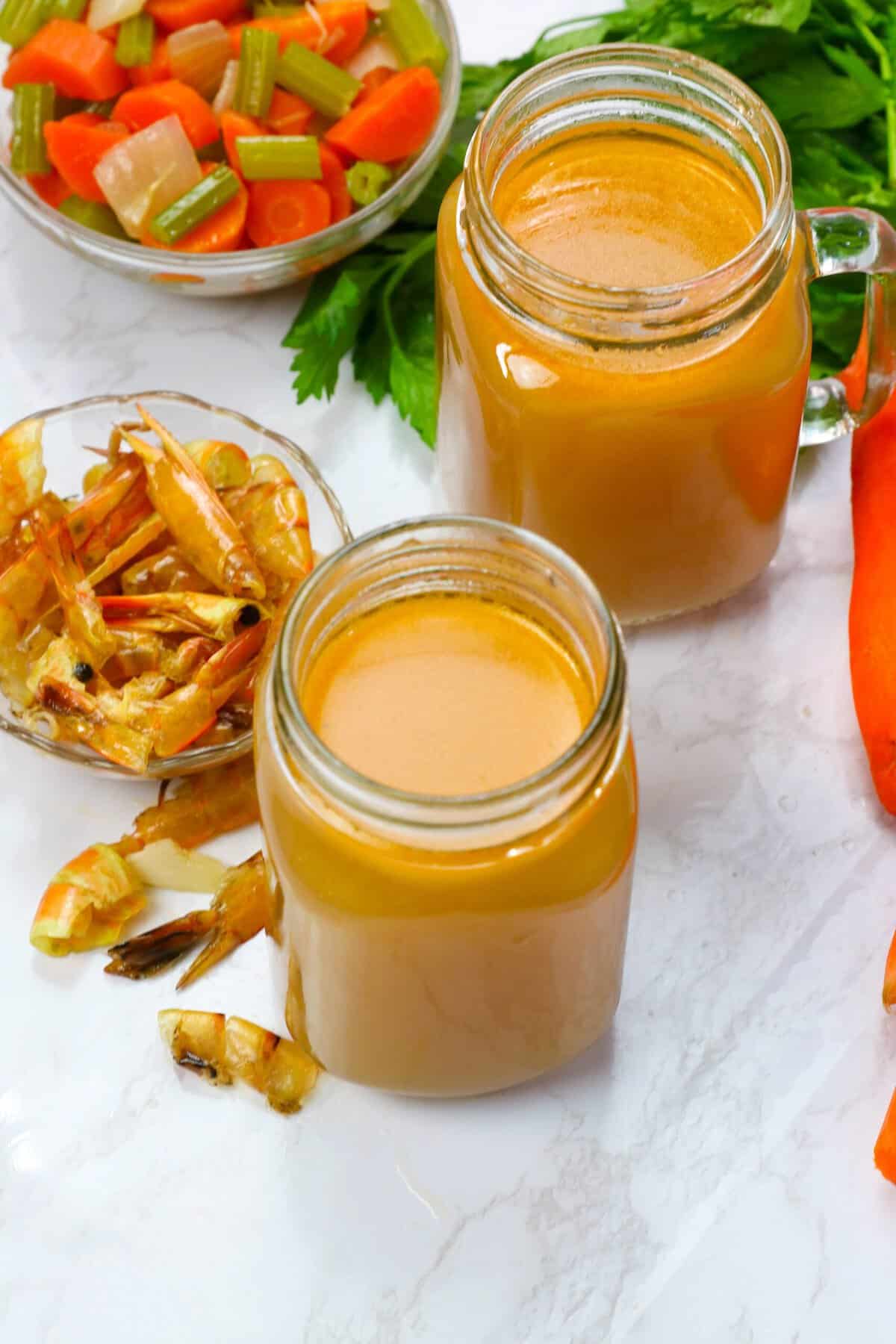
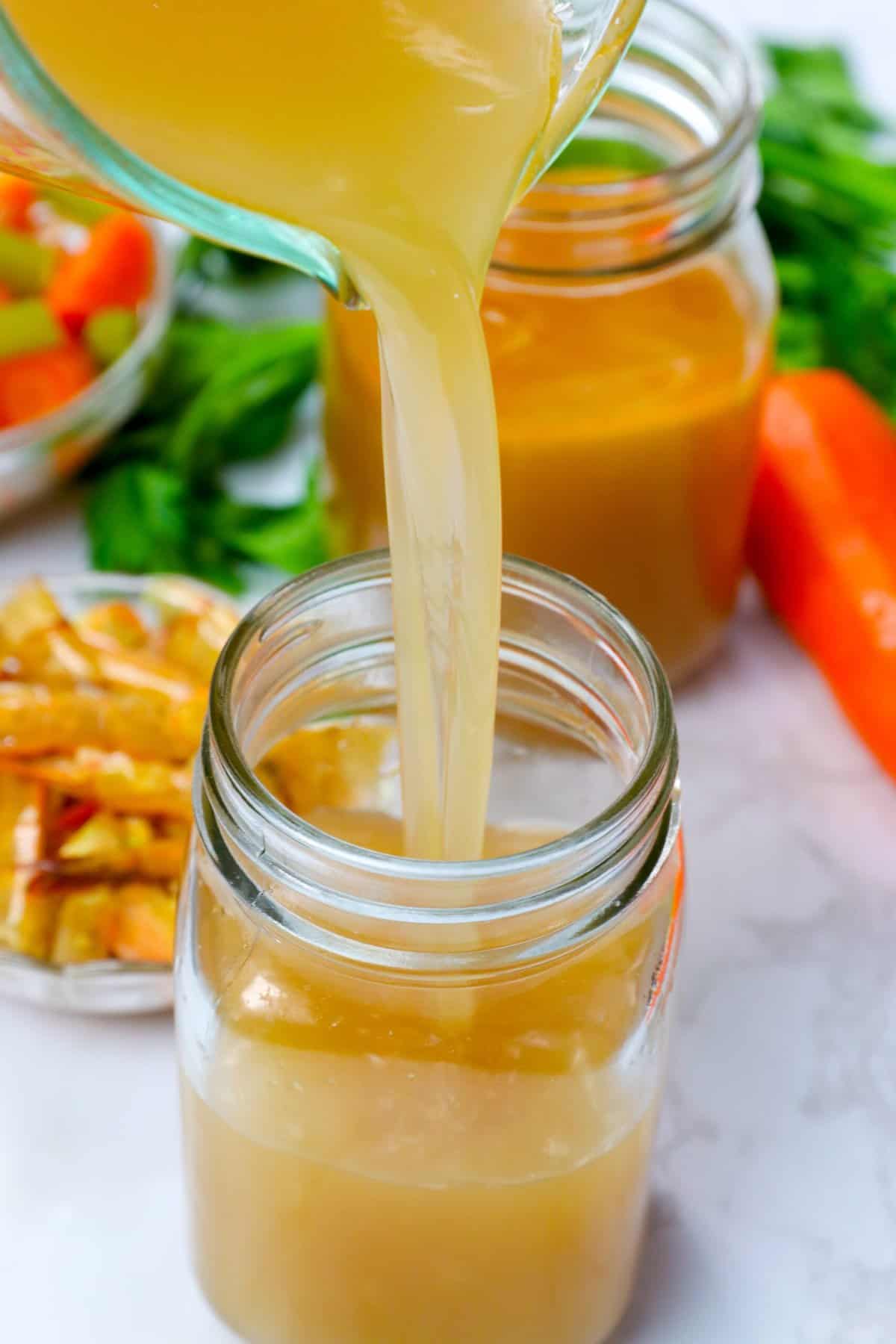
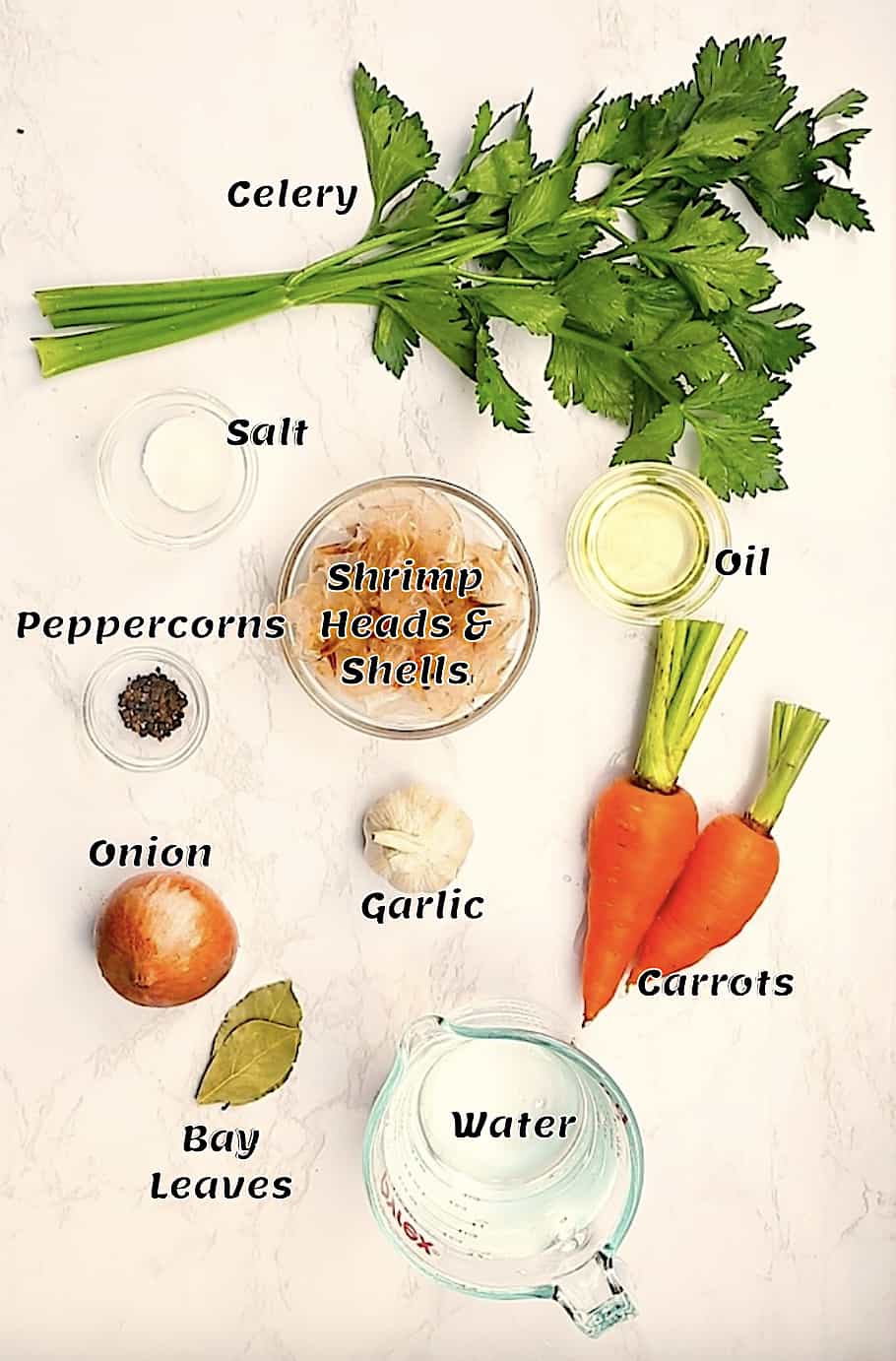
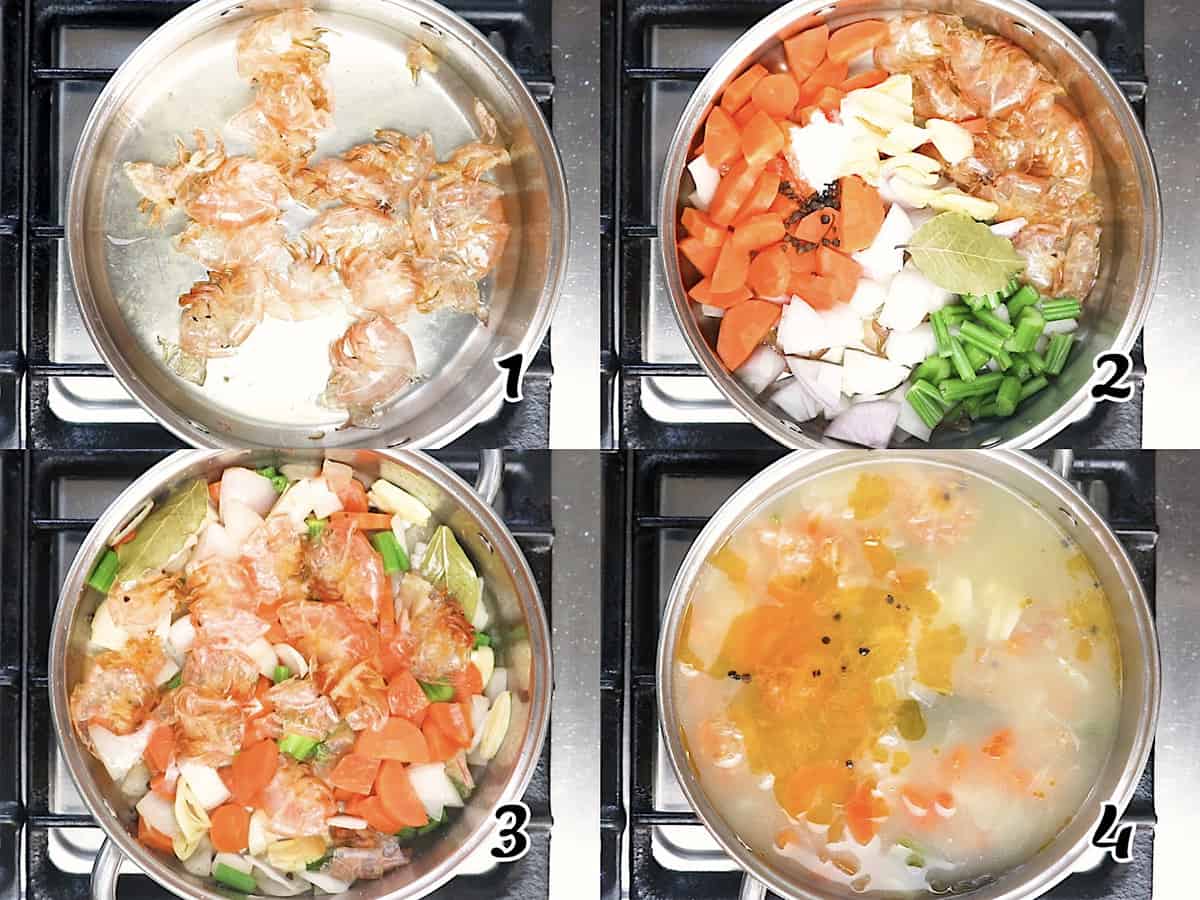
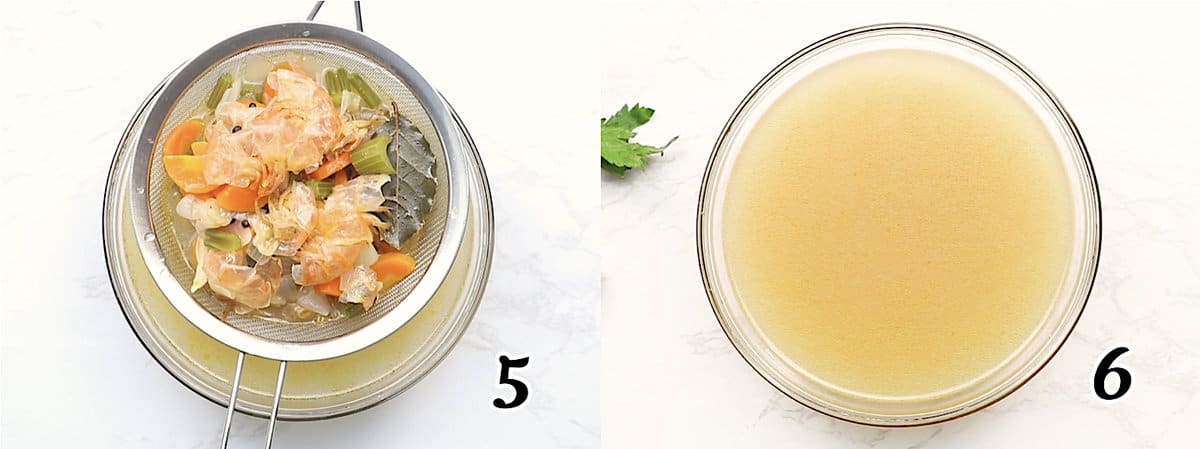




Glen says
I was surprised at how much flavor shrimp shells give stock. I will not be wasting them anymore.
ImmaculateBites says
Absolutely, shrimp shells are a hidden gem in the culinary world! They’re packed with flavor and can significantly enhance the depth and richness of stocks and broths. It’s great to hear that you’ve discovered their potential and plan to make the most of them in the future.
Using shrimp shells is also a wonderful way to reduce waste and get the most out of your ingredients. You can even save and freeze them until you have enough to make a batch of stock. Keep exploring and enjoying these flavorful discoveries in your cooking!